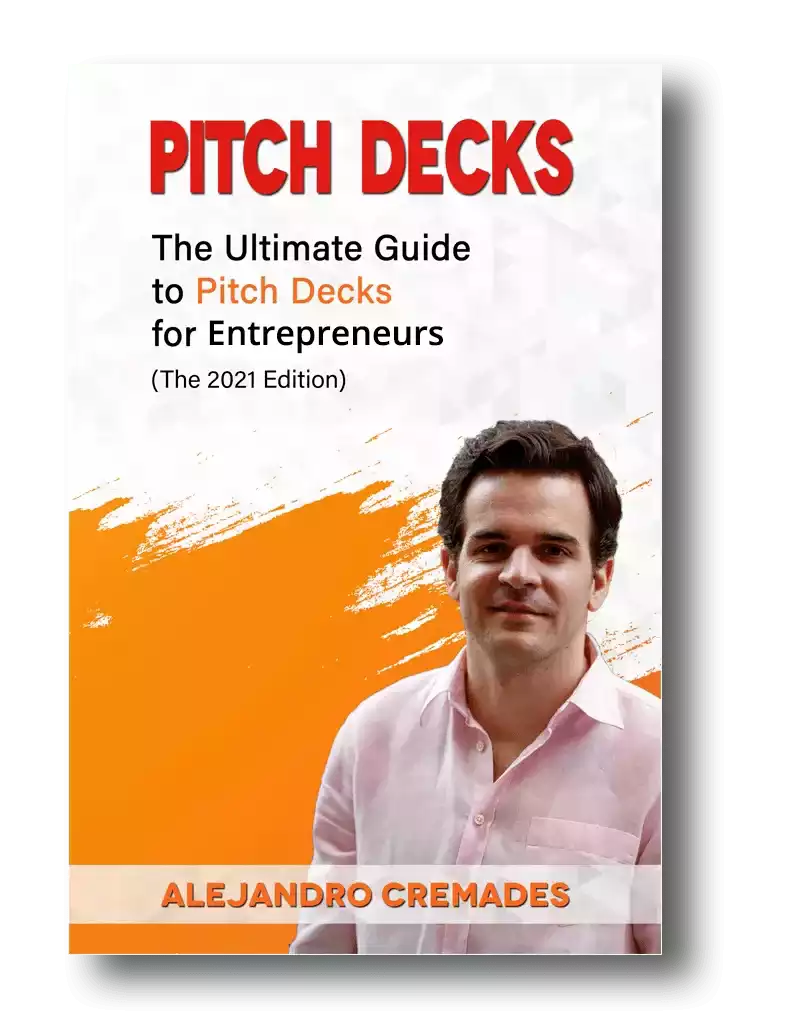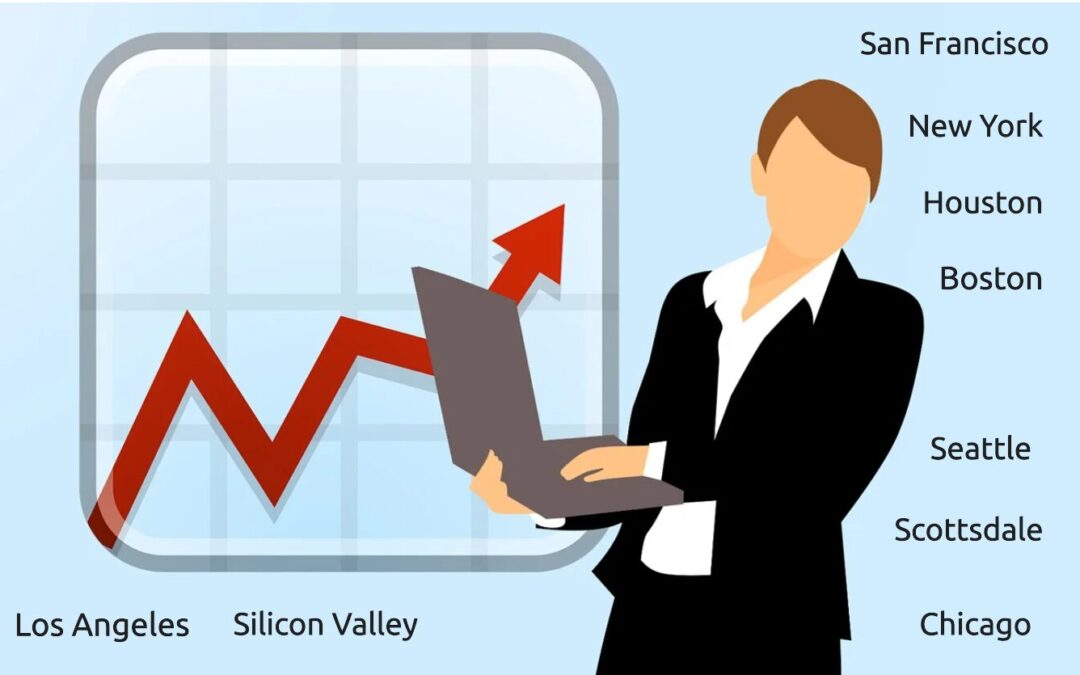Organizing a fundraising roadshow targeting early-stage investors is a powerful strategy to present your brand to the right audience. Structuring an impactful investor roadshow can make the ultimate difference between missed opportunities and successful capital raising.
A great roadshow ensures your company and its innovations gain exposure to venture capitalists, private equity firms, and angel investors. You’ll demonstrate potential while providing a detailed company introduction, financial projections, market analysis, and team profile.
Your objective here is to generate maximum interest so investors are enticed to fund the company. Entrepreneurs organize roadshows at different stages of the company’s lifecycle, such as early stage, new product launches, and an IPO.
Early-stage startups can organize a fundraising roadshow when they’re ready for their seed or series A round from venture capitalists. Here’s everything you need to know about fundraising roadshows and how they work.

*FREE DOWNLOAD*
The Ultimate Guide To Pitch Decks
Understanding Fundraising Roadshows
A fundraising roadshow is like a hyped-up sales pitch run with the primary goal of attracting capital investment. A typical roadshow comprises a series of events organized in the top VC cities across the country.
The company’s top-tier management team and C-suite executives meet with a diverse selection of carefully curated investors. Consider it a sales pitch and promotional program designed to convince investors that the company is viable and worth backing.
Your presentation will include a detailed history of the company’s establishment, product portfolio, and core team. If you’re running the roadshow prior to an IPO, you’ll target potential shareholders who may be interested in purchasing shares.
Advantages of an Effectual Roadshow
A fundraising roadshow targeting early-stage investors can be a robust strategy for getting your company out before the right audience. Here’s how:
Targeting the Right Investors
Now that your company is poised for accelerated growth, you’ll need to approach investors with higher assets under management. Startups seeking series A or seed funding should approach a diverse pool of investors in different locations.
You’ll specifically target venture capitalists, angels, and other institutional investors who are particularly interested in early-stage companies. If you’re seeking series A funding, expect to offer voting rights and possibly a board seat in exchange for capital.
When planning your fundraising roadshow targeting early-stage investors, check Crunchbase, AngelList, and PitchBook for information about potential backers. Use the data as an excellent starting point to identify the right investors.
Next, do your research to understand their investment criteria and the sectors they prefer to support. Checking their websites for projects they’ve supported should give you an overview of who to target. Also, ensure that your company’s value proposition matches investors’ evaluating conditions.

Raise Capital Smarter, Not Harder
- AI Investor Matching: Get instantly connected with the right investors
- Pitch & Financial Model Tools: Sharpen your story with battle-tested frameworks
- Proven Results: Founders are closing 3× faster using StartupFundraising.com
Engaging with Investors
Connecting with investors on a personal level raises your chances of getting the capital you need. Understand that investors are interested in the face behind the brand more than the company and concept you’re developing. Remember, capital is offered to the people building the company.
Investors rely on the founder’s business acumen, track record with successful companies, and ability to handle unexpected setbacks. They will offer funding if you can convince them that you have what it takes to carry the company forward.
Use the roadshow as the ideal platform to present your business vision and build rapport and trust. You’ll communicate dedication and enthusiasm for the concept you’ve developed and the conviction you can solve customer problems.
Building a robust relationship with investors can be a huge asset in more ways than one. Aside from capital, you can hope to make a strategic partnership that delivers sector-specific expertise. Further, when you’re ready to build your next venture, you’ll safely rely on these partners to support you.
Pitching the Company and Products
You’ll leverage the roadshow as a platform to present the company and innovations with the potential to disrupt the industry. You’ll showcase the opportunity as having immense potential to generate rich returns for investors. Start by creating a pitch deck customized for your target investor class.
You’ll craft a compelling narrative woven around your mission statement and vision. Tell a story about how the problem impacted you personally before you set out to look for tangible solutions. Also, include data-driven insights into the market and value proposition you’re offering,
Remember to include analytics highlighting the market gaps you hope to fill, competing products, and your brand’s USP. Don’t forget to underscore what sets your ideas apart from the competition. The team is another asset you’ll stress. Talk about their qualifications, expertise, and experiences.
Getting Valuable Feedback
Roadshows can be a powerful tool to gauge and assess the market before you dive headlong into developing the ideas. Presenting the product to industry experts will bring you valuable feedback. You’ll get advice on making strategic improvements for better sales and delivering value to users.
Each presentation you give will help you refine the deck by understanding the impact it has on your audiences. Depending on the fundraising success, you’ll learn what works and what doesn’t. On the flip side, every successful pitch will earn you credibility.
When pitching to new investors at the next location, you’ll raise your success ratios. You’ll come across as a professional with value-driving concepts that can earn revenues and profits. Also, expect to build credibility among your competitors and customers when the product launch is executed.
Don’t overlook the potential to expand your network of partners, contacts, and investors. You could open channels for future collaborations via horizontal or vertical M&A deals for accelerated growth. Not to mention funding opportunities in subsequent funding series or even an IPO.
Roadshows Beyond Fundraising
A fundraising roadshow targeting early-stage investors is, undoubtedly, a strategic move. But you don’t need to restrict the approach to raising capital. Use each event to build a more significant brand presence in the market. Remember that you’re putting a face to the business name.
You’ll connect with a vast audience of investors and customers by talking about the merits of your innovations. Also, provide demonstrations to allow the audience to experience the products and how they work. You’ll explain how they solve problems and offer value for money.
The roadshow event can also help you generate leads. Don’t hesitate to communicate with customers to understand their needs and pain points. You can always tweak products according to the feedback you gather. You’ll also build relationships and get their contact information.
Product Launches and Penetrating New Markets
A roadshow event is highly effective for new product launches. You’ll use the event as a platform to create buzz for the product by presenting to the audience for a first-hand view. You’ll display the product to audiences in select locations with the highest potential for getting orders.
Then again, if you’re aiming to penetrate new markets, organizing a roadshow could be an effective strategy. Connecting with new customers, lead generation, building relationships, and opening avenues for strategic partnerships are only some of the advantages.
Keep in mind that storytelling is everything in fundraising. In this regard, for a winning pitch deck to help you here, take a look at the template created by Silicon Valley legend, Peter Thiel (see it here) that I recently covered. Thiel was the first angel investor on Facebook, with a $500K check that turned into more than $1 billion in cash.
Remember to unlock the pitch deck template that founders worldwide are using to raise millions below.
Structuring a Fundraising Roadshow Targeting Early-Stage Investors
You’ll structure the roadshow event meticulously down to the last detail. For starters, be clear on your objectives and end goals. If you’re raising capital, be clear about the seed or series A and the targeted amount you want to raise. Accordingly, you’ll need to create a robust pitch deck.
However, your strategies will differ if you intend to launch a new product or expand to new markets. Then again, if you intend to forge new relationships or improve brand awareness, that’s how you’ll structure the event. You’ll also design the narrative and presentation accordingly.
Ultimately, you’ll organize a roadshow when the company is ready for an IPO. Use these preliminary events as training events to prepare to take the company public.
Organizing the Roadshow
- The first step is always identifying the right investors most likely to back the company. It’s advisable to narrow down the list and approach pre-vetted investors only. Your fundraising consultant can assist by pointing you in the right direction.
- Organize a detailed itinerary that includes stops in different cities where you can hope to maximize investor reach and engagement. Don’t forget to factor in the costs, timelines, and investor availability. Later, you’ll include the expense in the final costs of raising capital.
- Create a list of management and key personnel to accompany you. The selection will depend on their areas of expertise and presentation skills. For instance, if you intend to organize a product launch, including a tech specialist in the team is crucial.
- Customizing the presentation materials is the next critical step. You’ll develop a detailed pitch deck depending on the specific investors and their locations. Remember to include core data that backs your claims about market opportunity, potential customer base, and other insights. Also, include the business model, financial projections, and value proposition. If you’re running a product launch or market expansion, set up demonstrations complete with visual effects and other equipment.
- Don’t overlook time and space for audience interactions and feedback. Having presented the company and its products, you’ll want to assess reactions and impact. Set aside time and resources for engagement and collecting contact information. Be sure to respond to follow-up queries.
- After the initial introductions, follow up with investors with an offer to provide additional info and details. You’ll send out thank-you email notes to appreciate their time and attention and share updates from time to time about the latest developments. Remember to be professional and transparent in your approach.
Evaluating Roadshow Success
Treat each roadshow event as a learning experience and conduct a detailed analysis of its progress. Evaluate if you achieved the main objectives and isolate areas for improvement. Also, evaluate the feedback you received from investors and consumers.
For instance, use investor feedback to refine the pitch and strategies for future fundraising success. You’ll also assess their tips for improving the business model, financial projections, and perhaps even the product. Also, incorporate customer feedback to tweak product features.
Reiteration and learning can help you advance your skills and product portfolio to ensure higher sales and success.
Regardless of the location or objective for which you’re delivering the pitch, you should know how to improve storytelling to get your point across. If you need more information about how to make the pitch effective, check out this video I have created.
Additional Tips for an Effective Fundraising Roadshow
Ready for some additional tips for organizing an effective fundraising roadshow targeting early-stage investors? Here’s what you need to know.
- Understand that the roadshow presentation is a powerful tool to project the company as a viable investment opportunity. Make sure to include all the pertinent information investors need. At the same time, remain laser-focused on the crucial details without too much complexity. Try not to overwhelm audiences.
- A roadshow fundraising pitch is similar to any other investor pitch; only remember to tailor it for specific audiences. Include the business model, financials, mission statement and vision, team profile, market opportunity, and competition slides.
- Always set aside time for the Q&A so investors can clarify any doubts. This is also when you engage them in actual conversations and build relationships.
- Make sure the introduction grabs attention and flows organically into a compelling story. Most investors make their decision within the initial three minutes of listening to the pitch. That’s the time frame you have to make the right impression.
- Engage the audience and encourage participation by asking questions. Initiate interactions and discussions.
- Don’t make the mistake of delivering a monotonous, rehearsed pitch. Nor should you be disconcerted if a question interrupts your flow. Let your enthusiasm for the company and its products shine through. Come back to relevant slides and topics later.
- It’s okay to have the team at the table. Encourage team members to step in and answer questions if the query pertains to their area of expertise. For instance, if an investor needs to know about product specs, the tech expert can step in to answer.
In Conclusion
A fundraising roadshow targeting early-stage investors can do a lot more than just that. Look at it as an effective marketing strategy that not only brings you much-needed capital but also exposure. You’ll get the brand and its products before the right audience.
Executed strategically, the roadshow can get you customers, strategic partnerships, and expert investors who will offer expertise and guidance. Other advantages are earning credibility, expanding your customer base, and penetrating new markets.
Just make sure to get the right guidance from professional fundraising consultants and get the show on the road.
You may find our free library of business templates interesting as well. There, you will find every template you need when building and scaling your business completely for free. See it here.





Facebook Comments